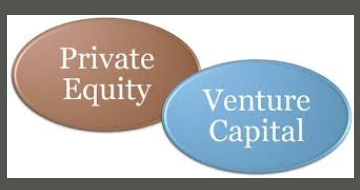IIRF Online > Finance & Accounting > Finance > Financial Managment > The Complete Finance Manager Course
The Complete Finance Manager Course by Udemy
Financial Management, ERP systems, Accounting, Capital budgeting, Presentation design, Management, and Negotiation
Course Highlights
- Understand how companies measure financial performance
- Determine why ERP systems facilitate business process
- Employ best practices when working on the implementation of an ERP system
- Learn basic accounting principles
- Specialize in advanced accounting topics (revenue recognition, invoicing mechanics, cost flow methods, capitalized costs, fair value accounting, revaluation, etc.)
- Secure financing and understand debt covenants
- Perform leasing calculations
- Perform pension liabilities calculations
- Know how to optimize a company's working capital
- Perform inventory, trade receivables, and trade payables management
- Recognize when a company is inefficient in its working capital management
- Understand the time value of money
- Be able to calculate cost of debt, cost of equity, and WACC
- Forecast future cash flows
- Discount future cash flows to obtain their present value
- Know how to raise equity
- Understand the treatment of dividend payments, share repurchases, and stock splits
- Perform financial statement analysis
- Assess investment opportunities
- Apply capital budgeting techniques such as: NPV, IRR, and ROI
- Build capital budgeting financial models from scratch
- Perform sensitivity analysis
- Create interactive Excel dashboards
- Use Excel slicers for financial reporting
- Create professional and attractive corporate presentations - in line with ones prepared by top tier investment banks
- Study the ten key principles of presentation creation
- Learn how to create company profile, key financials, share price, group structure, waterfall, geographical presence, and other types of slides used in finance
- Calculate a company's net cash flow
- Be able to create a company valuation model from scratch
- Calculate a firm's enterprise and equity value using DCF
- Learn how to become an effective and respected manager
- Be able to recruit, select, onboard, train, develop, and retain talented employees
- Provide employee feedback
- Organize performance review meetings
- Negotiate effectively
- Apply negotiation tactics that will ensure your success in the long run
Skills you will learn!
Curriculum
1 Topic
What does the course cover?
2 Topics
How we measure financial performance
Improving performance measurement and collecting data
9 Topics
What is an ERP system?
Strongest advantages of ERP systems
Quiz ERP systems (1/2)
Difficulties when implementing an ERP system
Best practices when implementing a new ERP system
A finance manager's leadership is crucial when implementing a new system
Case study: Hershey's
Quiz ERP systems (2/2)
ERP Systems - Course Challenge #1
14 Topics
Introduction to the section
The different types of accounting standards
The three financial statements
Types of revenues
Types of revenues - exercise
Types of expenses
Income taxes
Depreciation & Amortization
Types of assets
Asset categories - practical example
Types of liabilities
Liability categories - practical example
Equity
Accrual accounting
4 Topics
The importance of timing when recognizing revenues
Revenue recognition criteria - technical
Potential conflicts of interest when recognizing revenue
A practical example
4 Topics
Cost recognition principles
Technical aspects of cost recognition
The two types of Income Statement formats
Basic Accounting - Course Challenge #2
5 Topics
Introduction to the section
The importance of Trade receivables
What happens when clients do not pay on time?
Case study - dealing with non-paying customers
A technique to improve receivables collection
4 Topics
Types of Inventory
The relationship between Cogs and Inventory
The different cost flow methods
Cost flow methods - a practical exercise
7 Topics
The types of fixed assets
Capitalizing interest expenses
Fair value accounting
Intangible assets with finite life vs. Intangible assets with infinite life
The revaluation model
The revaluation model - practical exercise
Intangible assets created internally
3 Topics
Accounting for trade payables
Accounts payable vs notes payable
The advantages of e-invoicing
4 Topics
Distinguishing between debt and equity
Loan amortization
Debt covenants
Debt covenants - Case study
3 Topics
Why companies lease assets?
Leasing exercise
Cost flow methods Leasing Revaluation - Course Challenge #3
2 Topics
Why use leverage?
The relationship between leverage and cost of debt
6 Topics
Types of equity
Raising equity in different stages of a company's lifecycle
What type of dividends are distributed to shareholders?
Timing mechanics of dividend payments
Share repurchases
Stock splits
6 Topics
Introduction to financial statement analysis
Performing financial statement analysis
Ratio analysis
Practical example: Analyzing P&G's financial report (1/2)
Practical example: Analyzing P&G's financial report (2/2)
Financial statement analysis of Tesla Inc. - Course Challenge #5
12 Topics
Introduction
The importance of working capital optimization: case study
Overtrading vs. excessive investment
Trade receivables management
Re-order level
Economic order quantity (EOQ)
Inventory optimization techniques
Trade payables management
Working capital optimization - a roadmap
Symptoms of inefficient working capital - Trade payables
Symptoms of inefficient working capital - Trade receivables
Working capital optimization - Course Challenge #5
10 Topics
An introduction to capital budgeting
Why companies need capital budgeting
The time value of money in a capital budgeting exercise
Working with present and future cash flows
Calculating cost of debt and cost of equity
An important subtlety - project-specific beta
Completed 33% of the course
Calculating WACC
How to treat the value of residual assets at the end of the project
Forecasting future cash flows
13 Topics
An introduction to the case study
Going through the 'Drivers' sheet
Forecasting the savings that will be generated by the project
Performing a fixed asset roll forward
Forecasting working capital needs
Modeling the project's financing
Creating a P&L sheet
Cash flow calculation
Calculating the discount rate we will use - WACC
Calculating cost of equity
Discounting cash flows
Performing sensitivity analysis
Power plant capital budgeting - Course Challenge #6
6 Topics
Introduction to Pivot tables
Structuring a Pivot table
Pivot table formatting
Modifying a Pivot table's content
Using GETPIVOTDATA
Learn how to work with slicers
12 Topics
Introduction to the Case Study
Understanding the source data
Mapping of the source data
Setting up a structure for the dashboard we'll create
Working on the dashboard's layout
Inserting calculation formulas
Creating the source Pivot table
Using GETPIVOTDATA to connect the Pivot table and the dashboard
Adding slicers and making our dashboard interactive
Improving the layout of the slicers we added
How the dashboard can be used in practice
Pivot table dashboards with slicers - Course Challenge #7
3 Topics
Introduction to creating effective presentations
Types of corporate presentations
What you will see next
7 Topics
Principle #1 - Deliver maximum information in a limited space
Principle #2 - Develop logical slide flow
Principle #3 - Key messages start from the title
Principle #4 - Tailor the presentation to the intended audience
Completed 50% of the course
Principle #5 - Keep text messages short
Principle #6 - Use key words
4 Topics
Principle #7 - A picture is worth a thousand words
Principle #8 - Have the big picture in mind
Principle #9 - Plan well ahead
Principle #10 - Decide what information should be included in slides
3 Topics
Adding text boxes with instructions
Populating slide content
Formatting and polishing slides
5 Topics
Ensuring consistency across the entire presentation
Consistent font and font size
Aligning objects
Working in a team
Adding watermarks
7 Topics
Introduction
What is a company profile
Content going in company profile slides
Creating a company profile
Key financials
Company profiles - research
One-page company profile layout
3 Topics
Why create share price slides?
What content goes into a share price chart?
Designing a share price chart
7 Topics
Group structure
The management team slide
Waterfall charts
Financial information overview
Geographical presence
KPI evolution overview
Preparing a company presentation - Course Challenge #8
9 Topics
The reason we want to value a business
The investor perspective to company valuation
The two variables determining a company's valuation
Calculating Unlevered Cash Flow
Weighted average cost of capital (WACC) - the discount factor we will use
Forecasting the firm's future cash flows
Two stages of valuation - explicit forecast period and terminal value
Discounting cash flows
Coming up with Enterprise and Equity value
32 Topics
Introduction to the case study
How we build a complete DCF model
The structure of the model we will build
The company we are valuing
Modeling revenues
Using the CHOOSE function to create flexible financial models
Modeling other items (1/3)
Modeling other items (2/3)
Modeling other items (3/3)
Forecasting Balance sheet figures
The "Days" technique
Calculating "Days"
Using "Days" to forecast trade receivables inventory and trade payables
Forecasting PP&E Other assets and Other liabilities
Creating an output P&L sheet
Filling in the P&L sheet
Adding an output Balance sheet
Filling in the output Balance sheet
Structuring unlevered cash flow
Reconciling Unlevered cash flow and net cash flow
Calculating cash flow
Obtaining net cash flow figures
Editing multiple cell references at the same time
Adding WACC to the model
Using WACC to obtain the present value of future cash flows
Calculating Terminal value and Enterprise value
Obtaining Equity value
Performing sensitivity analysis for improved decision-making
Applying Goal seek
Recap of the model + charts we can build
Company valuation Tesla Inc. - Course Challenge #9
Tesla Inc. company valuation - detailed walkthrough and solutions
6 Topics
What are we going to see next?
Why companies need managers?
How to distinguish good managers
Managerial positions in an organization
Managerial functions
Introduction quiz
8 Topics
Why companies need planning
The objectives pyramid
Applying the SMART framework
Environmental scanning - competitor research
Financial analysis and calculating break-even
The importance of budgeting
Using project management to boost productivity
How to approach planning
4 Topics
How do we organize human resources in a company?
Why human resources are considered the most important asset of companies
Planning the firm's HR needs
Organizing human resources
4 Topics
Finding the right people for the job
Meeting candidates
Selecting among candidates
Pre-hire activities
6 Topics
Onboarding successful candidates
Learning and development - the key to employee engagement
Giving constructive feedback
Performance appraisal
Aligning compensation and performance
Post-hire activities
5 Topics
The core principles of employee motivation
Proven employee motivation tips
Stress management tips
A measure of last resort - terminating employee contracts
The leading function
3 Topics
What are we going to see next?
Why finance managers need to be good negotiators?
The reason people are not always good at negotiations
3 Topics
You need to know what BATNA is
Reservation point and the Bargaining range
Introduction
4 Topics
Self-assessment
Counterpart assessment
Situational assessment
Preparation is key
7 Topics
Splitting the difference - Distributive negotiations
Pie-slicing strategies
Interest-based bargaining
Interest-based negotiation strategies
Claiming
Choosing an optimal negotiation strategy
Types of negotiation
6 Topics
Aversive tactics and counter action
Dealing with conflict situations
The importance of trust
How to fix broken trust
Mediums of negotiation
Long-term success tactics
3 Topics
Disney buys Lucasfilm - a case study
Management and Negotiation - Course Challenge #10
Completing 100% of the course

The Complete Finance Manager Course
























